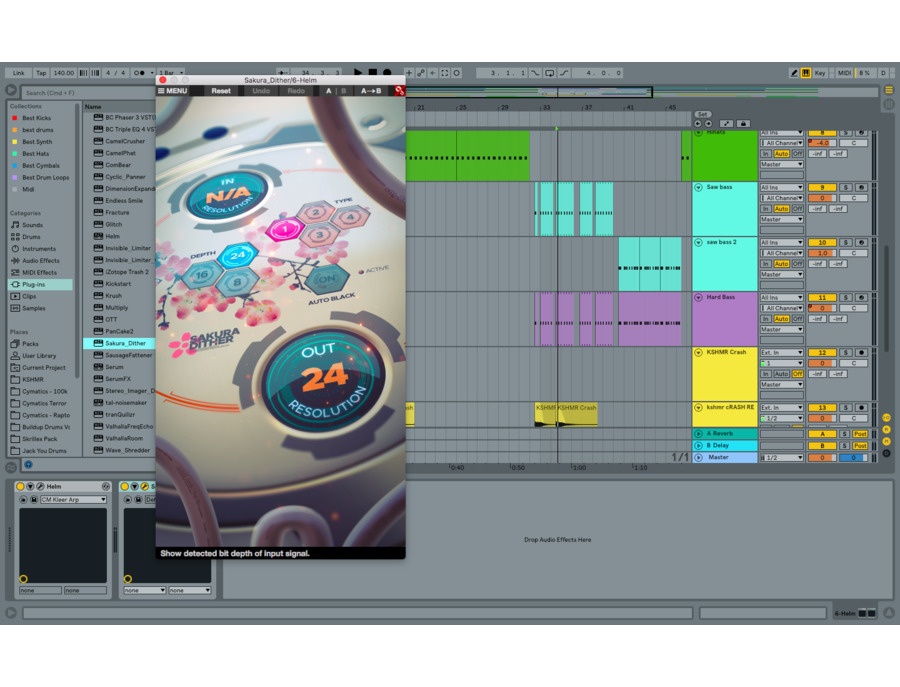
Released June 21, 2011, a version of FL Studio for iOS and on April 17, 2013, for AndroidĪ DJ console and mixing tool, similar to Scratch LIVE and Traktor. The most recent major version is FL Studio 20, released on May 22, 2018. Image-Line's flagship digital audio workstation. EZGenerator has won multiple awards since its release.
SAKURA SYNTH IMAGE LINE REVIEW SOFTWARE
Other software īeyond audio products, Image-Line developed and distributed EZGenerator, a software program for website design and maintenance. Deckadance works as both a stand-alone program and as a FL Studio plugin.

In 2007 Image-Line released Deckadance, a DJ mixing program developed by programmer Arguru. A multitude of plug-ins have been developed by Image-Line to work with FL Studio, including synthesizers such as Sytrus and effects plugins such as Maximus and Edison. FL Studio is now one of the most popular software production systems in the world, and Image-Line's flagship program. FruityLoops was eventually renamed FL Studio for branding purposes and to avoid a prolonged trademark dispute in the United States with Kelloggs. Image-Line continued to develop the FruityLoops application from a simple drum machine into a large and complex digital audio workstation. The program was released as Pro-DJ in France and the UK, and Radio 538 Music Machine in The Netherlands and Belgium. Image-Line then served as the program's OEM for Mattel. To gather income to support their servers, Image-Line had Dambrin develop an EJay clone called FruityTracks. However, the demo version released in December 1997 became so popular that the number of downloads quickly overwhelmed the Image-Line servers. Dubbed FruityLoops 1.0, the program didn't fit with Image-Line's other product lines of the time. In 1997 Dambrin gained an interest in music applications of the time such as Hammerhead and Rebirth 338, and developed a simple MIDI-only drum machine in an effort to merge the two products into a step sequencer that utilized both rows and steps.
SAKURA SYNTH IMAGE LINE REVIEW TV
Image-Line also topped the Belgian game charts 4 years in a row with their CD version of the Belgian TV game show Blokken. Other Image-Line developers created products such as the invoicing program Fact2000 and E-OfficeDirect, a content-based web tool that would a precursor to their later product EZGenerator. Dambrin's next project for Image-Line was the platform game Eat This, a shoot 'em up game that involved killing aliens. They hired the 19-year-old to work for them, and his first game for the company was the game Private Investigator. Image-Line took an interest in Didier "Gol" Dambrin, the developer who won the overall Da Vinci contest as well as the Game category.

Image-Line, which at the time had little money, won the contest in the multimedia category after reworking one of their game environments to fit the contest criteria. Didier "Gol" Dambrin Īround the time they released the games for Private, IBM launched the "Da Vinci" contest where the first prizes were color laptops.


The company officially adopted the name Image-Line in 1994. Private released multiple Image-Line CD-ROM games including Private Prison and Private Castle. Around this time CD-ROM games such as The 7th Guest were becoming popular, inspiring Van Biesen and Cannie to begin working with Private, one of the larger producers of adult video games at the time. Their first product was an adult video game based on Tetris, which they then offered on floppy disks in the ad section of Computer Magazine. Image-Line was founded by Jean-Marie Cannie and Frank Van Biesen, who after seven years of creating stock market software for Pavell Software, decided in 1992 to branch into video games.


 0 kommentar(er)
0 kommentar(er)
